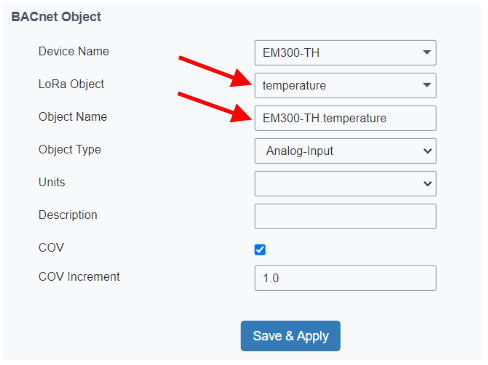How to use BACnet with the UG65/UG67
Though we would recommend to use MQTT or HTTP when using the UG65 and UG67 local network servers, BACnet is available as an option when trying to interface with devices that do not support MQTT and HTTP.
With that in mind, we collated a couple of useful links directly from Milesight on how to use BACnet with the Local Network server running on the UG65 or UG67 gateways.
Receive an uplink (read) in BACnet
This article here below is the first step to get data via BACnet.
The concept of payload decoding using Javascript is still required to get usable data. If you want to read other articles related to this, HERE is our article on MQTT and HTTP as a reference
Also, very important: the article uses a standard Milesight sensor for its example, which gives you a list of pre-defined options to select from.
When using a third party sensor, the LoRa Object and Object Name will show "custom" instead of "temperature" shown on the guide image

The idea is that on both the LoRa Object and the Object Name you should REPLACE the "custom" part with the JSON entity that you want to pull in BACnet
Example:
if your decoded JSON looked like this with the sensor name being "PRS_01"
{
"counter": 324,
"pressure": 23.5,
"is_alive": true,
}
and you wanted to extract the "pressure" element, you would use LoRa Object "pressure" and the Object Name "PRS_01.pressure"
Send a downlink (write) in BACnet
Here is an article from Milesight on how you can write (downlink) to a LoRa WAN device
